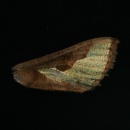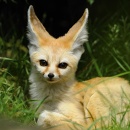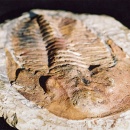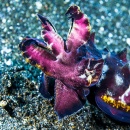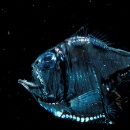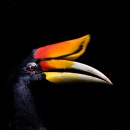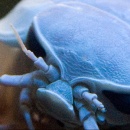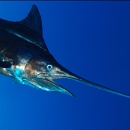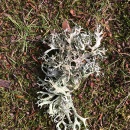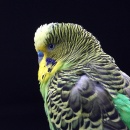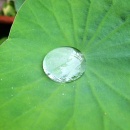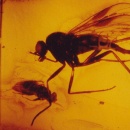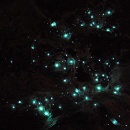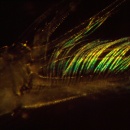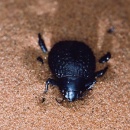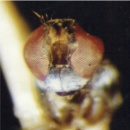Case Studies
Here are some examples of our current projects, revealing the diversity of the scientific subjects we cover, and the geographical spread of the species we study.
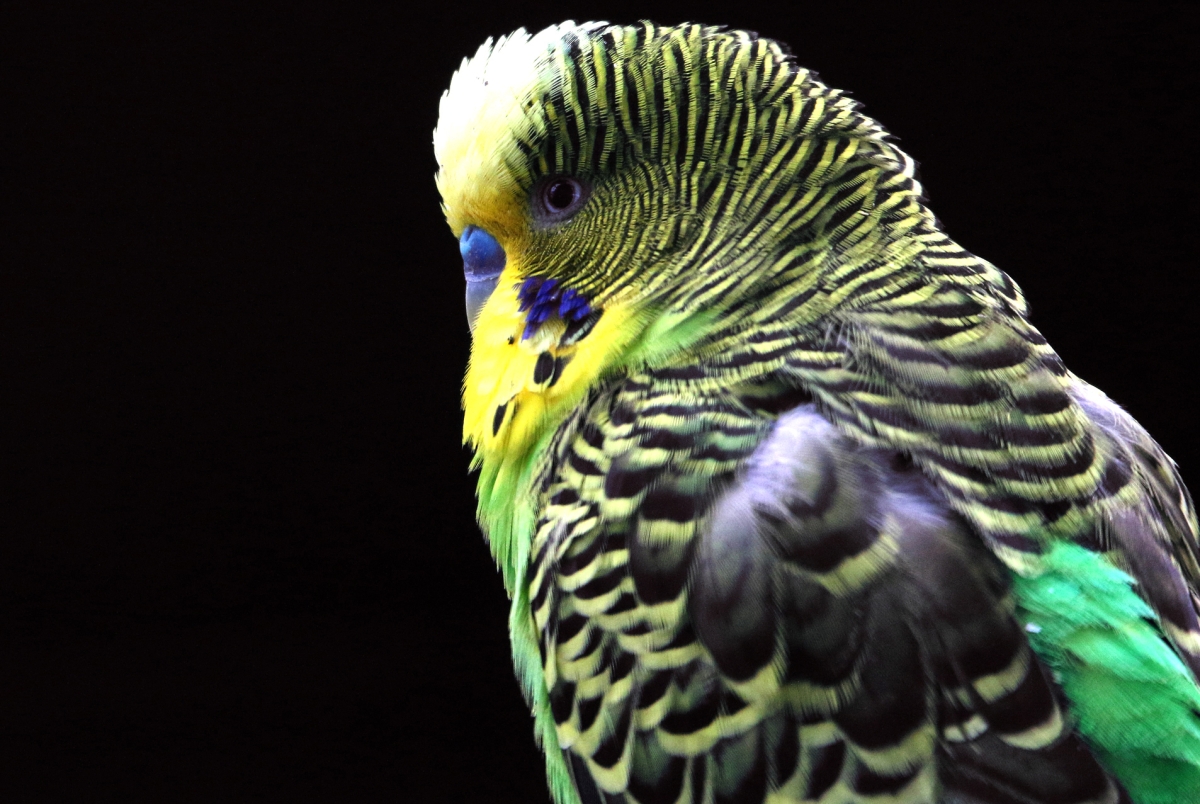
-

Moth Wing
United Kingdom
Many animals, including moths, produce gold and silver effects from only transparent materials, much thinner than a typical layer of gold paint. We are reproducing these for paints and coatings that cannot use metals, or require novel visual characteristics.
-

Fennec Fox
Sahara
Nocturnal mammals and insects sometimes rely on enhanced hearing. We aim to emulate the structures they have evolved to help amplify sound in order to improve our hearing aids.
-

Cambropallas Trilobite
Morocco
When a trilobite became the first animal to evolve image forming eyes and predatory instincts, around 520 million years ago, it triggered the Cambrian explosion, or Big Bang of evolution. We are modelling this event, and the behaviour of social animals, to build predictive software that may help businesses or other organizations run more efficiently.
-

Flamboyant Cuttlefish
Indonesia
Like chameleons, cuttlefish have a remarkable ability to instantly change colour due to 'chromatophores' in their skin. These colour change cells can expand or contract, or otherwise move pigment or reflective parts around. Although precise engineering of such devices may be beyond us, we are aiming to employ as many lessons as possible from chromatophores to create a colour change material or covering for our objects.
-

Hatchet Fish
Deep water, Indian, Pacific and Atlantic Oceans
Adapted to the darkness of the deep sea, hatchet fish possess silvery tubes that direct its bioluminescent light to outlets on the underside of its body. We are considering the application of the 'light splitters' at the junctions of the tubes to pipe systems that bring sunlight to the inside of buildings (and so reduce the need for electric lights).
-

Hornbill
Northern India
The enlarged bill of a hornbill acts as thermoregulator – the bird uses it as a radiator to dump heat. We are working on ways to copy this mechanism for use in electronic devices, to prevent them from overheating.
-

Bathynomus (Marine Isopod Crustacean)
Brazil coast
Related to woodlice, these amazing crustaceans can reach half a metre in length and can live at 1000m depth. Here, sunlight exists in the minimal amount that any eye could see. Indeed, the eyes of Bathynomus are extremely sensitive, and so we are considering them as a model for cameras suitable for low light conditions.
-

Marlin
Most marine areas
Marlin achieve great swimming speeds partly due to an optimized hydrodynamic shape and also micro-structures on their scales that cause water to 'roll' over the surface and reduce friction. We are copying the hydrodynamic shape for vehicle bodies and the micro-structures for improving sports equipment and swimming costumes.
-

Lichens
Arctic Russia
Ultraviolet light levels are relatively high in Arctic regions. Just as we apply sunscreen to block UV light from reaching our living cells, animals and plants – and in particular lichens – possess chemicals in their outer ‘skins’ that act as sunscreens. In addition to studying these natural sunscreens, we are working on ways to farm the lichens and extract their active ingredients. Unlike our sunscreens, the natural alternatives do not harm the environment when washed off our skin.
-

Polyommatinae (Small Blue) Butterflies
Iran
These butterflies, where they live high up on mountains, must optimize heat absorption. They have evolved to lose the blue colour of their relatives so that they can absorb all the potential heat energy in the sun’s rays, which they channel towards their muscles. We are applying the same type of channelling mechanism to the design of buildings in cold climates in order to prevent heat loss.
-

Budgerigars
Central Australian Desert
Australian and some South American parrots fluoresce – they glow under ultra-violet light. We found that in budgerigars, this fluorescence has a function during courtship, and so it has evolved to have optimal fluorescent properties, unlike the incidental fluorescent properties of our teeth, for example. We are investigating the potential to copy these fluorescent pigments for design application and medical diagnostics.
-

Lotus Leaves
China
Microstructures, coupled with a wax, on the surface of these leaves cause water to ball up rather than stream from the surface. When the balls of water roll, they pick up dirt particles and carry them away. This self-cleans the leaf, so that sunlight can reach all the photosynthetic cells. We are using this and similar microstructures found on reptile scales to produce mud-shedding and water-directing surfaces suitable for cars and Wellington boots.
-

Fly preserved in Amber
Poland
The eye of a 45 million-year-old fly retains microstructures that once allowed all the light to pass through its outer surface and reach the retinal cells below. When these microstructures are applied to solar panels today, we achieve a 10% increase in energy capture since no light is lost as surface reflections.
-

Nautilus
New Caledonia
The shell of the Nautilus contains numerous dividing walls. However, as pressure is increased (to simulate increasing depth) the whole of the shell shatters at one pressure. Therefore there are no weak points in this structure – it is not over-engineered like our bridges or buildings. We are using this principle of minimizing materials, and therefore environmental degradation, to design new buildings.
-

Glow Worms
Waitomo Caves, New Zealand
These glow worms, the larvae of gnats, produce their own ‘bioluminescent’ light. They also produce a network of transparent fibres, like fibre-optics, through which the light transmits. The light leaves the system when it reaches drops of transparent glue on the fibres – insects are attracted to the light and caught in the glue. We are copying this and other natural glues to make glues that do not harm the environment and even work under water in some cases.
-

Ostracod Crustaceans ('Seed-Shrimps')
Florida Keys
These tiny animals have a shrimp-like body contained within a bivalve shell. They have well-developed eyes, and so the shell must be super-transparent for these eyes to work to their potential. We are copying the shells to make novel contact lenses. We also examine the ostracod’s living cells to learn how they make their shells – we may gain insights for our engineering.
-

Darkling Beetle
Namib Desert
These beetles live in the hottest terrestrial environment on Earth, where rainfall is negligible. We collected specimens to keep in an artificial dune in our labs. We found microstructures that the beetles use to collect water from desert fogs. We reproduce these microstructures to use to collect water from fogs elsewhere, which could be used in hospitals in Africa, for example, because the water collected is also sterile.
-

Upside-Down Fly
NSW, Australia
We have traced the gradual evolution of micro-mirrors in a group of tiny flies to this species, which reflects a narrow beam of sunlight back into the sky to attract a mate. We are using this reflector to inspire new types of mirrors without metals and solar concentrators.
